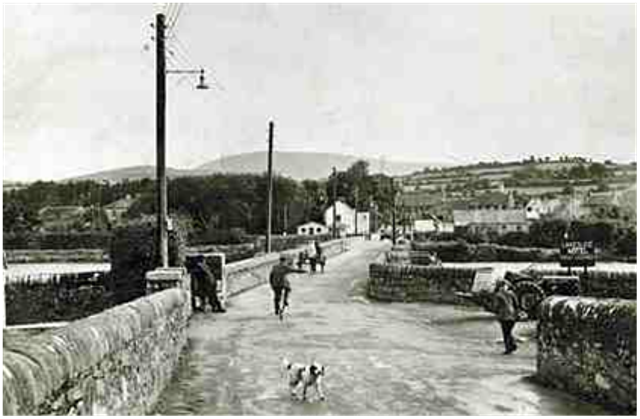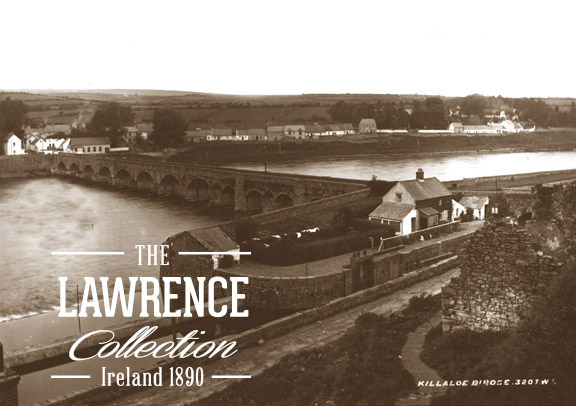Dominating the local news for the last number of years has been the possibility of building a new bridge in Killlaloe-Ballina. This project is now due to start in early 2019 and will be carried out in stages, with the entire project due to cost approx. 40 million euro.
It will not replace the existing bridge but will reduce the enormous amount of traffic which it is currently subjected to on a daily basis. Our beautiful historic thirteen arched bridge which joins the twin-towns of Killaloe and Ballina at this stage owes us no favours. It has been a loyal servant for almost 250 years and is now a protected structure.

The area around the Bridge has been inhabited for several thousand years. When the river was being dredged as part of the Shannon Hydro Electric Scheme, 1929 – 1930, numerous stone axes and artefacts were found in the river bed.
The first evidence of a bridge at this site was recorded in 1054 when Turlogh O’Brien is said to have built a bridge across the Shannon – Lewis Topographical Dictionary. This was likely a wooden structure.
The bridge was repaired and upgraded numerous times over the centuries, which can be seen by the description of this bridge by several writers –
In 1797, the Frenchman, De Latocnaye noted “the stone bridge, which crosses the Shannon here has eighteen arches but they are very small & the bridge will have to be rebuilt – a modern one need not have more than nine or ten arches”
In 1838, a Lady Chatterton recorded that “the long bridge over the Shannon was impassable when we came to the See. Seven of the centre arches having being carried away. Owing to the bishop’s exertions they were replaced by the five large arches, which now exist making the bride one of fifteen arches” (Lady Chatterton was referring to a Bishop Aburthnot of Clarisford). This would explain why the last five arches to the right of the bridge are smaller than the rest.
In 1846 Slater’s Directory refers to “a bridge of thirteen arches” while Guy’s Directory of Munster 1886 states “the village of Ballina has a population of 238…situated on the river Shannon here crossed by a bridge of nineteen arches”
The bridge has formed part of many historical events in our region – Normans, Cromwellians and English troops used it.
Following the Cromwellian Act of Settlement 1652, many of those from Munster and Leinster made their way over this bridge to the inhospitable lands of Connaught under the order “To hell or to Connaught”
On November 16th 1920 during the War of Independence, the British captured four men (three from East Clare and one from Galway) in Whitegare and brought them to the jetty at the Lakeside Hotel, which had been taken over by the British Army. They were taken into a room in the hotel, questioned and badly beaten. At around midnight, they were taken to the bridge, ordered to stand with their backs to the wall and shot dead. This shooting was in retaliation for the burning of Scarriff RIC Barracks in September 1920. A stone monument on the bridge commemorates this event.
In connection with the Shannon Hydro-Electric Scheme, the Shannon water level was raised to bring it to the same level as Lough Derg. During the time one of the arches of the bridge was replaced by an iron swivel bridge for the convenience of high-masted vessels – the only rectangular arch which can be seen on the bridge. However, it was only opened once when being tested soon after construction.
The next time you cross this piece of history on foot or by car, take a second to marvel on it’s amazing history and its dedication to our twin-towns over the past 250 years.
Source: Ballina/Boher Parish – Our History and Traditions Kevin M. Griffin & Kevin A. Griffin, 2000
Arlene White, March 2018


